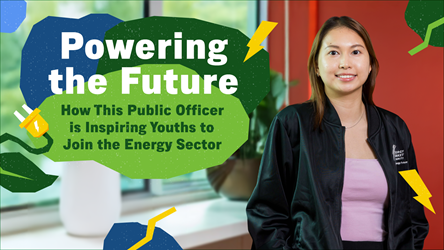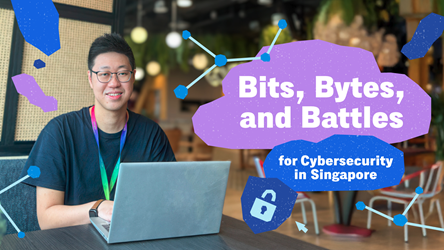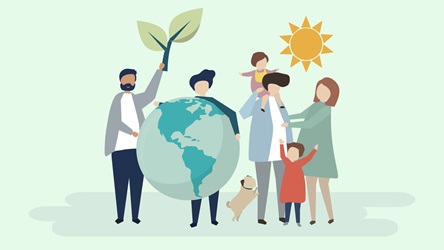Firing Up The SCDF With New Spaces And Ideas

How many people can say they rode in ambulances while on holiday overseas – and not during an emergency?
Singapore Civil Defence Force (SCDF)’s Lieutenant Yeo Ren Jie, for one. Timing his holidays with ambulance trade show overseas, LTA Ren Jie was also given access to observe how Emergency Medical Services in Australia, the US and Europe conduct their operations. He brought back good practices to share with the SCDF.
LTA Ren Jie strongly believes that constant learning and innovation go hand-in-hand. With a deep interest in technology and design, he is always on the lookout for new ideas and trends that can be implemented at work.
“It is inspiring to see how fast technology has evolved… what was once considered impossible in the past can be made a reality in the near future,” the enthusiastic 30-year-old says.
Redesigning for speed and safety
LTA Ren Jie’s passion and head for innovation have contributed to a highly impactful team project: the New Generation SCDF Ambulance. Its new design improves on safety and workflow, such as allowing emergency medicine to be administered while a patient is being transported to a hospital, and making it easier to navigate busy traffic. The ambulance also has a rumbler siren that uses vibrations to alert nearby vehicles to give way.
The previous ambulance design had a larger boxy interior. But its side-facing bench made it unsafe for paramedics if a hard and sudden brake happens, even while belted up. The new design has single front-facing seats and high-mobility seat belts that keep paramedics safe while still allowing them some reach to tend to the patient.
As the team worked to design a more functional ambulance, it had to contend with balancing the need for functionality versus space. A new workstation desk in the ambulance was considered, but feedback from the paramedics revealed that they preferred to have more space to move around. So the desk was removed in the second round of design, with a different team taking ownership of the design.
Listening and convincing
The process of getting such a project approved also had its fair share of challenges. As the new ambulance’s design was not bought off the shelf, the cost was significantly higher, which the team had to justify.
The paramedics were also concerned about how the new design would affect them. “No one likes drastic changes to their workflow,” says LTA Ren Jie. So the team made sure to explain the benefits and how the new ambulance features would improve their safety.
“Answer the number one question on everyone’s minds: ‘Why should I care?’” he adds. “It is important to start with the user experience and work back towards the technology or design features – not the other way round. Always explain the why before the how.”
To get new ideas and make them a reality, he finds opportunities to attend talks, trade shows and courses on innovation. In 2014, he was awarded a scholarship to pursue a full-time degree in Industrial Design at the National University of Singapore, where he graduated top of his cohort.
He has received design awards from the Ministry of Home Affairs and Public Service Division, and recently won the Exemplary SkillsFuture Public Service Award for the 2019 Public Sector Transformation Awards.
Spaces to spark possibilities
Trained as a paramedic as well as in firefighting and rescue, LTA Ren Jie is now a Rota Commander at Yishun Fire Station, managing a team of 35 frontline officers who respond to fire and rescue incidents.
He is also the Innovation Champion for the 3rd SCDF Division, leading monthly brainstorming sessions with staff and steering the division’s innovation efforts.
“As an innovator, you need to have big dreams and vision. Sometimes, we may take small steps to get to our end goal. One needs to be humble as he executes but be visionary in aspiration.”
For example, Yishun Fire Station has an innovation corner to foster design thinking, collaboration and the exchange of ideas. “It’s a free space for everyone to ideate, sketch and bounce off ideas in a cosy and conducive environment,” he says.
LTA Ren Jie has big plans to turn an existing lecture room into a larger innovation corner with space for ideation meetings and building rapid prototypes – complete with 3-D printers and interactive whiteboards. “My colleagues are definitely excited about the space and have been sharing ideas to further personalise it,” he says.
To him, innovation is often “a combination of new technology, an existing problem and a big idea that transforms into tangible results”.
To that end, he is also part of a team exploring the feasibility of a drone delivery system for AEDs – an expansion of his university final year project, which he is excited to see being applied beyond academic research. He is also looking into using immersive technology and mixed reality for training and operational purposes. "Those are ongoing trends for future technology in the SCDF and something I am exploring with our innovation unit.”
The gist
- Learning can happen anywhere
Be open to weaving learning opportunities into daily life – even on holidays. - Get feedback from users to discern needs from wants
Involve the primary users in the design process. - Find spaces to generate new ideas with team mates
This could mean blocking off time and a physical space to work on making the workplace together.
- POSTED ON
Sep 11, 2019
- TEXT BY
Audrey Ng
- PHOTOS BY
catspace









